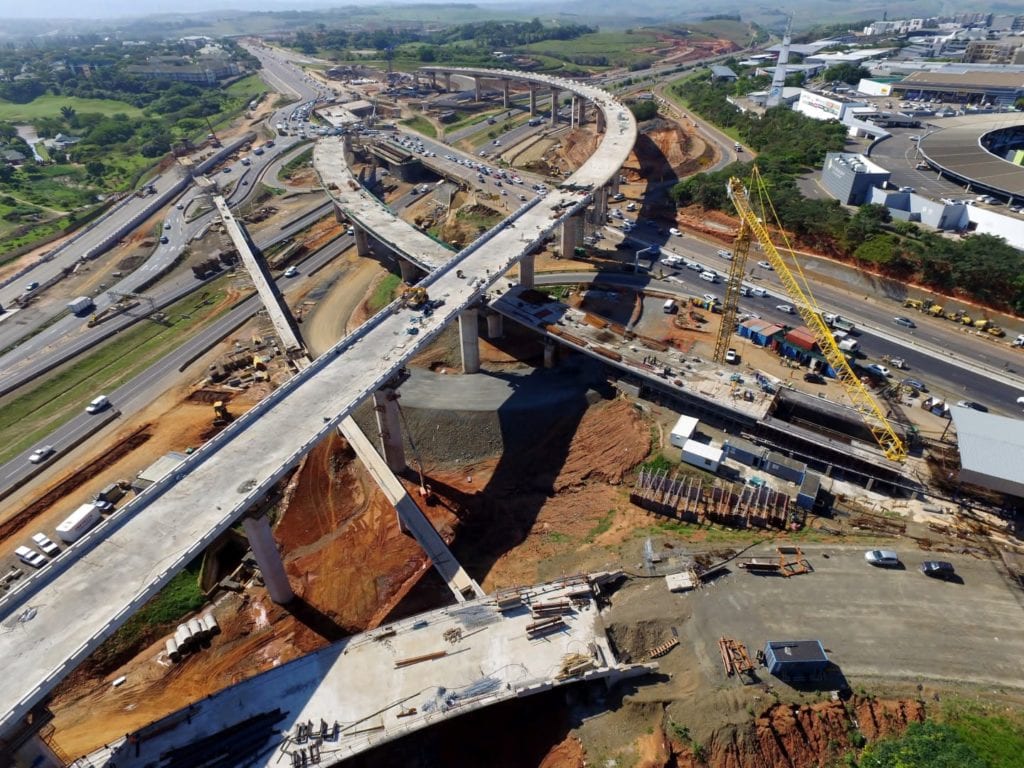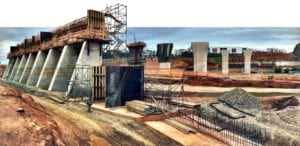
Frikkie OosthuizenExecutive: Contractual Affairs and Support Services at SAFCEC
From its inception in 1939, the South African Forum of Civil Engineering Contractors (SAFCEC) has represented its member companies on key issues affecting the industry, ensuring fair practice and an enabling environment for a constantly evolving construction industry. More than 50% of SAFCEC’s members are emerging companies, supported by long-established medium and large enterprises. At the highest level, SAFCEC currently delivers for it members in two key areas, namely at the Bargaining Council and at the Construction Charter Council, particularly in terms of the proposed BBBEE scorecard. “Our key role in the formulation of the Construction Charter has been the springboard for many initiatives that are designed to ensure the sector transforms and grows in a sustainable manner,” explains Oosthuizen. SAFCEC’s lobbying role with organs of state at the ministerial, provincial and local government level remains a critical one. For example, SAFCEC is currently participating, along with the Construction Industry Development Board (CIDB), in finalising the best practices for the Community Participation Goals. Preparations are also under way for the next round of negotiations at the Bargaining Council. These will start in the new year, ahead of the expiry of the current agreement in August 2018. SAFCEC, MBSA and the BBC-BE are also working towards the establishment of a Health and Safety Trust. The intention is to introduce additional self-monitoring and control measures that will assist the Department of Labour in overcoming skills shortages in this area. Additionally, SAFCEC is working with other industry organisations to establish best practice standards for prompt payment and construction adjudication provisions. As Oosthuizen points out, prompt payment is not purely a governmental issue; contractors also need to pay their subcontractors on time. “In the UK, studies show that during the 70s, 80s and early 90s, the country’s construction industry experienced a major slowdown, largely influenced by a ‘pay when paid’ approach where contractors were only paying subcontractors if they had sufficient funds. Obviously, this had a devastating ripple effect. The same is true in present-day South Africa, where many emerging SMMEs face substantial business risks as a result,” he explains. In the UK scenario, when delayed payment procedures were corrected, industry growth followed. “We need a similar mind shift in our South African industry so that we can reschedule the sequence of payment applications between subcontractor, contractor and employer in a way that doesn’t constrain growth. We also need to factor in the implications of the new procurement provisions,” Oosthuizen adds.

Mt Edgecombe Interchange upgrade
Changing contractor landscape
The Preferential Procurement Policy Framework Act (No. 5 of 2000) (PPPFA), coupled with the proposed BBBEE scorecard for the construction industry, has a couple of significant implications, particularly for predominately white-owned companies. Oosthuizen points out that the challenge faced by a Level 4 company when competing with a Level 1 organisation on the 80/20 principle for contracts above R50 million will be significant to overcome going forward. Coupled to that, 30% needs to be subcontracted in terms of the PPPFA. “I believe one of the most significant shifts we need to make is to replace the term ‘subcontractor’ with ‘fellow-contractor’, the emphasis being on fostering proactive partnerships,” says Oosthuizen.
“We need to develop independent, self-sufficient companies that are efficient, competitive and profitable, and not dependent on main contractors for their economic survival. Currently, I work extensively with black-owned SMME contractors who need assistance in overcoming challenges with larger companies in terms of payment and contractual issues, which underscores the point.”
Currently, only 3% of 9CE contractors are at BBBEE Level 1 – clearly a low figure. However, some municipalities are only specifying
Level 1. “At level 4, you cover 90% of all contractors, while a high percentage of black-owned construction companies are at Level 2. So the Level 1 stipulation excludes most players. My view is that BBBEE limitations will overheat the market for specific segments and will lead to tender price increases. So organs of state need to take these factors into account,”
he asserts.
Economic pinch
Major economic and political events during 2017 have severely impacted the civil engineering industry, with estimated tender values down by as much as 40% for the first two quarters. Tender activity is also subdued. For example, CIDB grade 9CE tenders per quarter have dropped to as low as 10 in 2017. Similar trends are being experienced across all
CIDB levels. The CIDB recently undertook a Red Tape investigation and contractors surveyed identified five main constraints:
- the payment process
- access to work
- access to credit (which has major considerations, since construction is a cash-flow-driven business)
- issues surrounding BBBEE
- corruption.
“As SAFCEC, we need to help members gain a fuller understanding of the underlying issues and take a delicate approach in seeking the right answers. There are tailor-made solutions to be found at the small, medium and large contractor level,” says Oosthuizen.

Cornubia N2 interchange
Price indices intervention
Statistics South Africa (Stats SA) recently announced its decision to discontinue publishing the indices required for contract price adjustment escalation calculations. The reason, it says, is that the collection and management of the indices no longer complies with Stats SA’s quality requirements. At the same time, however, it does emphasise their importance for
the industry. Currently, a working committee is undertaking the development of new civil engineering/construction-specific indices. There are a number of participants involved, including Sanral, SAFCEC and other organs of state. The goal is to find a resolution before the end of 2017, which is when Stats SA’s current set of indices expire. If not reapplied, Oosthuizen says the implications are potentially detrimental for business in general. “It boils down to the ability to accurately estimate price risk escalation for key commodities that include fuel, bitumen, steel and cement. South Africa has traditionally been exposed to price extremes in these and other key material groups. Therefore, maintaining this statistical forecasting mechanism is important.”
SIPDM
The National Standard for Infrastructure Procurement and Delivery Management (SIPDM) has been welcomed by SAFCEC as it will improve information flow to contractors. The most prominent aspect is the differentiation between the different supply chain and procurement routes that organs of state can choose – i.e. general goods, general services, and products developed or altered on-site. Government wants to use the SIPDM to ensure value for money in infrastructure development. The fact that only registered built environment professionals can administer construction contracts has many advantages for public sector owners and clients. “No longer will construction language be lost in translation,” says Oosthuizen. The SIPDM’s philosophy emphasises the development of a relational model where contractors are appointed for terms rather than contracts. This moves away from the traditional ‘once-off project, once-off development of relationships’ approach, which is not sustainable for the future of South African construction. “That will foster the fellow-contractor approach, breaking down the barriers inhibiting industry growth. At SAFCEC, we will build value together,” concludes Oosthuizen.










